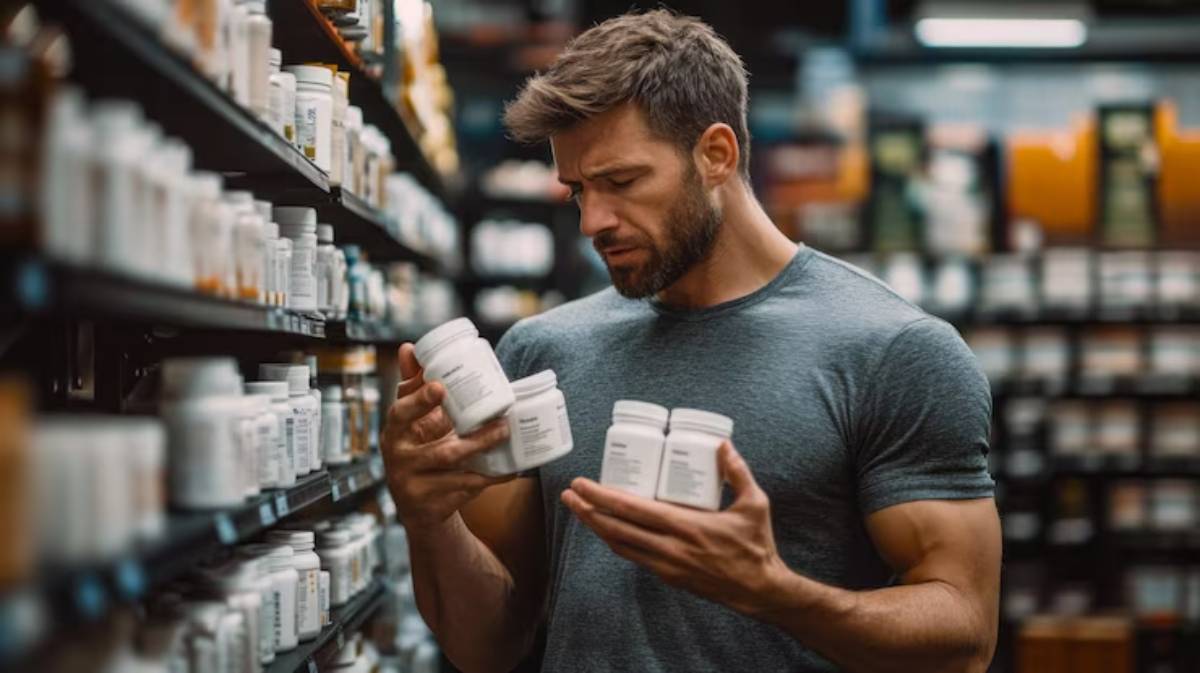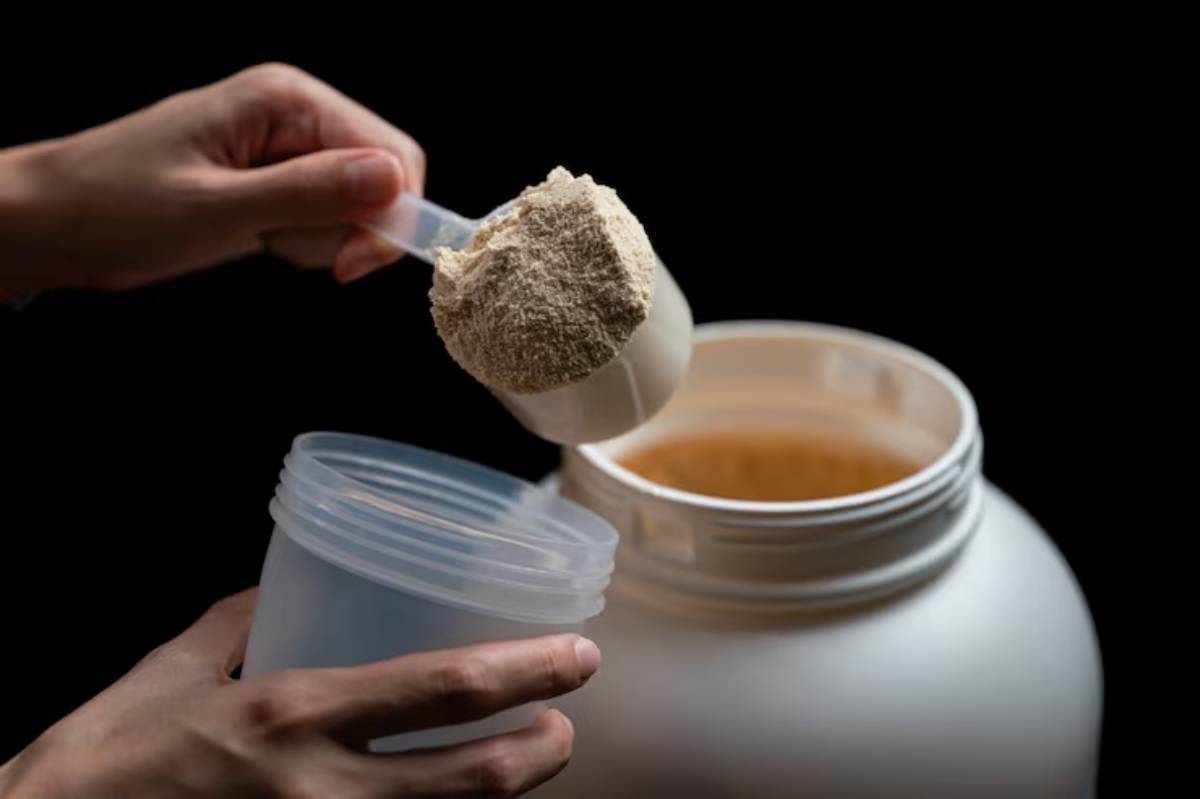
How to Spot Fake or Low-Quality Supplements
Have you ever questioned whether your protein powder is actually working—or worse, wondered if it’s even real? You’re not alone. In an unregulated market brimming with bold claims and shady vendors, fake or low-quality supplements are more common than most gym-goers realise.
Knowing how to detect counterfeit or poor-quality muscle products can protect your health, your wallet, and your progress. This expert-backed guide will walk you through how to avoid bad supplements and ensure you’re only investing in legit muscle products that deliver results.
Quick Guide: How to Spot Fake or Low-Quality Supplements

- 1. Verify the Seller: Buy only from authorised retailers or the brand’s official store.
- 2. Check Packaging: Ensure seals are intact, labels are clear, and batch/expiry info is present.
- 3. Research the Brand: Look for transparency, lab testing, and online reviews.
- 4. Look for Certifications: Trusted marks include Informed-Sport, NSF, and USP Verified.
- 5. Cross-Check Product Info: Match ingredients and details with the brand’s official website.
- 6. Track Your Body’s Response: Side effects or no results can be warning signs.
Understanding the Core: Why Fake Supplements Are a Serious Concern
Fake supplements aren’t just ineffective—they can be dangerous. From spiked ingredients and illegal additives to expired or repackaged goods, the risks are real.
Research Insight:
A 2023 European Food Safety Authority study found that 1 in 5 imported sports supplements tested failed to meet label claims, and nearly 12% contained undeclared ingredients, some of which were banned or harmful.
These products may:
- Fail to deliver the promised nutrients
- Contain harmful fillers or stimulants
- Lead to side effects like nausea, jitteriness, or organ stress
Quick Reference Summary: Red Flags for Fake or Bad Supplements
| Red Flag | What It Means |
| Unsealed or damaged packaging | Possible tampering or poor handling |
| Too-good-to-be-true pricing | Often counterfeit or expired stock |
| Lack of third-party testing | No safety or quality guarantee |
| No batch number or expiry date | No traceability or manufacturing control |
| Overpromising claims | Marketing hype with no real backing |
| Unfamiliar sellers or websites | High counterfeit risk |
Step-by-Step Guide: How to Spot Fake Supplements Like a Pro
Step 1: Inspect the Packaging
- Look for sealed lids, intact shrink-wrap, and tamper-evident bands
- Check spelling and font consistency—counterfeits often have misspelt words or blurry printing
- Legit products usually feature batch numbers, expiry dates, and manufacturer details
Step 2: Research the Brand
- Is the brand recognised in the fitness community?
- Do they have a verified website and customer service contact?
- Are they transparent about ingredients, sourcing, and testing?
Tip: Search “[brand name] reviews” or “[brand name] lab results” to get real-world insights.
Step 3: Verify the Seller

- Buy from authorised retailers (e.g. brand websites, Amazon official stores, certified distributors)
- Avoid third-party marketplaces with unclear seller info or dramatic discounts
- Look for seller ratings and buyer photos
Step 4: Check for Third-Party Testing or Certification
Look for seals like:
- Informed-Sport / Informed-Choice – free from banned substances
- NSF Certified for Sport – independent lab-tested
- USP Verified – meets quality and purity standards
Learn more about how to read a supplement label like a pro for identifying these indicators.
Step 5: Compare Product Details
- Cross-check: flavour names, nutrition facts panel, ingredient order and quantities
- If anything doesn’t match the brand’s official website, it’s a red flag
Step 6: Monitor Effects on Your Body
- Are you experiencing unexpected side effects (headaches, digestive issues)?
- Do you notice no difference at all, even after consistent use?
- Consider a different batch or product and report it to the manufacturer.
Pro Tips & Important Notes
- Avoid buying open-box supplements from unknown resellers—even if the price is tempting
- Stick with reputable brands that publish lab results or undergo independent testing
- Don’t mix multiple new supplements at once—if you react badly, you won’t know which caused it
- Download barcode scan apps that compare label data against verified product listings
Best Practices & Additional Insights
- Always keep your receipt and note the purchase date and seller name
- Consider logging your supplement cycle, noting product brand, effects, and any side effects
- Be cautious of products with unlisted proprietary blends—they often hide weak dosages or fillers
- Share suspicious product experiences in fitness forums or Reddit to warn others
FAQs

What should I do if I suspect a fake supplement?
Stop using it immediately. Contact the manufacturer with batch details and photos. Report the seller to the platform or the relevant food safety authority.
Are all cheap supplements fake?
Not necessarily, but drastic discounts (50%+ off RRP) on niche platforms are often red flags. Compare prices from authorised sellers to verify.
Can I trust supplements from gym stores?
Yes—if they’re reputable and authorised distributors. Ask if they source directly from the manufacturer or a trusted wholesaler.
What does “third-party tested” really mean?
It means the product has been sent to an independent lab to confirm what’s on the label is actually in the bottle—and nothing more.
Conclusion: Your Supplement Safety Matters
Choosing legit muscle products isn’t just about gains—it’s about your health. With this guide, you’re now equipped to spot fake supplement warning signs, avoid dodgy dealers, and invest in quality products that support your fitness goals.
Don’t gamble with your stack. Inspect, research, verify, and only trust what earns it. Your body will thank you.
Explore more supplement strategies in our muscle gain supplement stack.


